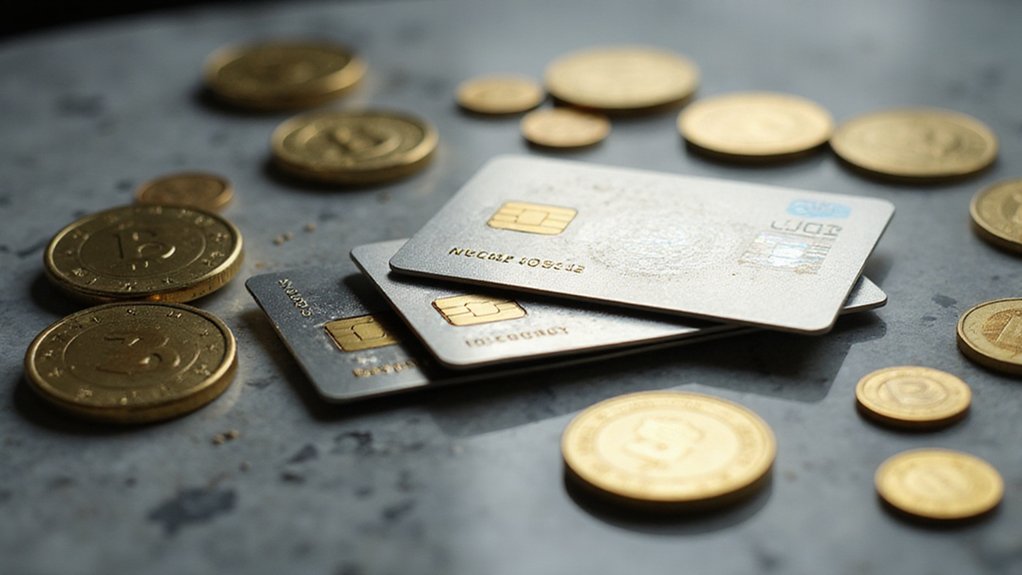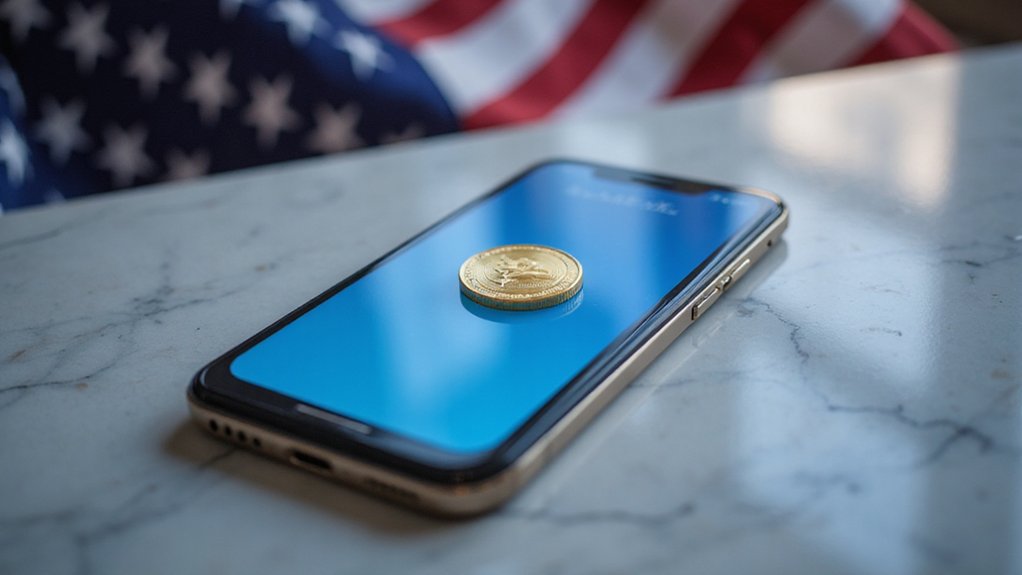While traditional banks were busy perfecting the art of charging fees for the privilege of accessing one’s own money, crypto cards have quietly orchestrated a coup in Europe’s small-transaction landscape, capturing an impressive 45% of purchases under €10—territory once considered the unassailable domain of cash and pocket change.
The numbers tell a compelling story of disruption in motion. New crypto card orders surged 15% across Europe in the first half of 2025, with users demonstrating distinctly different spending patterns than their traditional banking counterparts. The average crypto card transaction hovers around €23.7, compared to €33.6 for conventional bank cards—a telling indication that these digital upstarts are carving out the micro-spending niche with surgical precision.
Digital upstarts are surgically capturing Europe’s micro-spending territory with €23.7 average transactions versus traditional banking’s €33.6.
Perhaps most intriguingly, crypto card users have embraced the grocery aisle as their battlefield of choice, with 59% of transactions occurring at supermarkets (surpassing the ECB’s 54% figure for traditional cards). Dining and bar expenses account for another 19%, suggesting these aren’t merely tech enthusiasts playing with digital toys, but consumers integrating cryptocurrency into mundane daily purchases.
The online spending differential reveals the true nature of this financial evolution. Crypto card users conduct approximately 40% of their transactions online—nearly double the eurozone’s 21% average for traditional cards. This digital-first approach reflects not just technological preference, but a fundamental reimagining of how money should move through the economy.
The competitive advantages driving this adoption are hardly subtle. Crypto cards offer near-instantaneous settlement and minimal fees for transactions under €50, while enabling direct cryptocurrency spending without the traditional banking system’s labyrinthine conversion processes. Users can spend Bitcoin or Ethereum as effortlessly as they once swiped plastic, bypassing the bureaucratic machinery that has long characterized financial transactions. While stablecoins dominate at approximately 73% of transactions, the growing use of major cryptocurrencies like Bitcoin and Ethereum signals a shift toward viewing crypto as everyday currency rather than mere investment vehicles.
Traditional banks now find themselves in the peculiar position of watching their smallest, most frequent revenue streams migrate to platforms that didn’t exist in their current form a decade ago. The irony is palpable: while banks spent years monetizing micro-transactions through various fee structures, crypto cards have demonstrated that efficiency and user experience might actually matter more than institutional pedigree in capturing consumer loyalty. This shift mirrors the broader transformation happening across the cryptocurrency ecosystem, where smart contracts enable automated, transparent transactions without traditional financial intermediaries.









